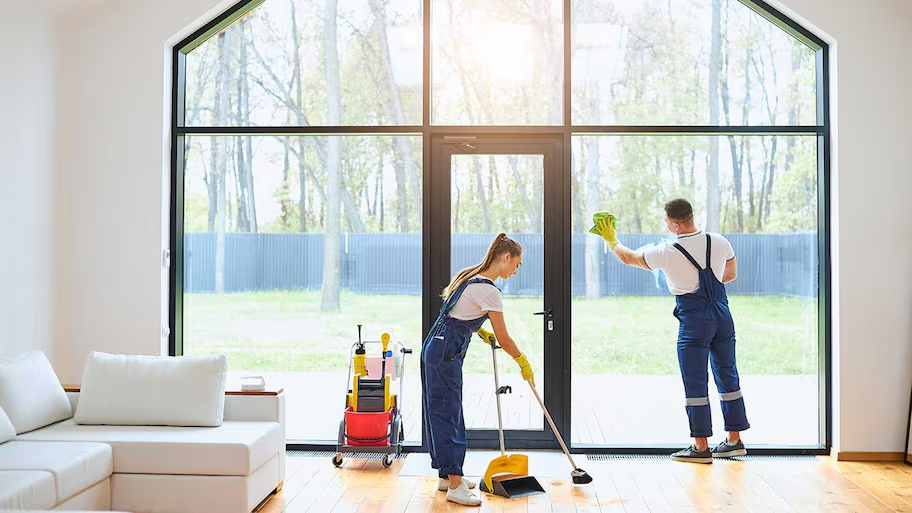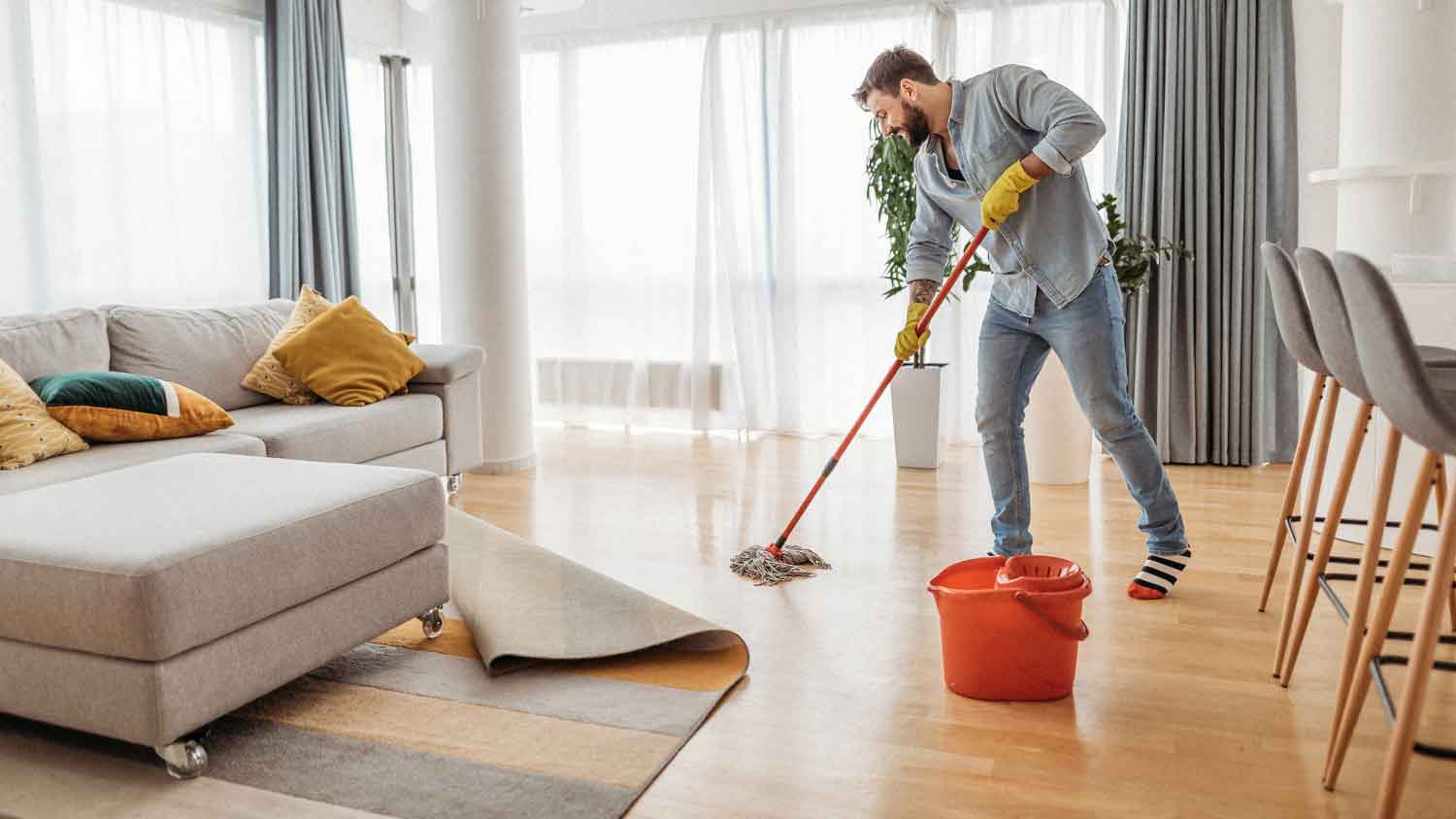Is Your House Making You Sick? These Household Habits Could be the Culprits
Your home may be a headache to clean sometimes, but you shouldn't have to clean it to avoid a headache altogether.


For silent sufferers of seasonal allergies, your house should be a haven from itch-inducing pollen, sneeze-worthy grass, and the dreaded ragweed. But your home could harbor dust, mold, pests, and chemicals that make you feel low-key—or not so low-key—sick in your everyday life as well. Deep cleaning your home is not only ideal for avoiding bacteria, but it can also reduce allergens aggravating unexplained symptoms.
What Is Sick Building Syndrome?
Harvard's T.H. Chan School of Public Health spoke with 36 experts to uncover hazards in our homes that could be making it a "sick" building. Since we spend 65% of our lives lounging, eating, and now often working in our homes, constant exposure to aggravating elements could affect our long-term health in a very subtle way.
Our daily habits, such as cooking, vacuuming, putting on makeup, and even switching on the HVAC, release particles. Mix this with poor ventilation, lack of good sunlight, or dirty air filters, and you have a recipe for headaches, poor sleep, runny noses, and even poor cognitive function.
While the term "sick building syndrome" often refers to office and commercial buildings, our homes can also become harborers of allergens that can affect our overall wellness over time.
Common Offenders of Indoor Air Quality
Let's start by saying that you should always start by seeing your doctor the moment you sense a change in your health. If you have a sudden headache, switching up your cleaning solutions may be a good step five, but not step one.
All this said, you can take some cautionary steps recommended by the Harvard health team to remove common allergens and increase your home’s overall "health,” especially if you have asthma or allergy issues. Here are nine culprits that could be making your home an unhealthy place to rest.
1. Your Vacuum Cleaner
Cleaning the floors catches everything from the muck on our shoes to the fallen cobwebs from the ceiling. But vacuum cleaners without proper HEPA filters may not trap in this grit as much as we think. In some cases, it's simply breaking it up and spraying it across the room in smaller particles.
Be sure to clean and regularly update your filters to ensure your vacuum protects your air as well as your floors.
2. Pests (And pesticides)
Reactions to insect bites are one thing, but did you know that your body can react to the saliva, shed skin, and pest waste as well? Allergy and asthma sufferers can be particularly prone to issues. Not only does this pest residue build up inside walls, cabinets, and closets, but it can do even greater damage when circulated through your air ducts.
If you do suspect a pest problem, Harvard Health recommends sticking to what's known as Integrated Pest Management (IPM) and avoiding chemical pesticides that can cause further health problems.
3. Dust and Dust Mites
Dust mites earn their own category simply due to their deep love of our homes and comfy spaces. Dust and dust mite allergies can lead to a running nose, sneezing, itchy skin, or even difficulty breathing.
Dust mites love to hide in upholstered furniture, bedding, mattresses, pillows, and certain flooring options. Stick with allergy-friendly flooring options like hardwood or linoleum if you're a dust-mite allergy sufferer.
4. Mold and Mildew
Let's talk about leaks, moisture, and standing water. Not only is water the great nemesis of a safe and sturdy home, but it can lead to harmful or aggravating mold and mildew.
Mold in your air ducts is a major red flag, especially since your HVAC system is a prime area for collecting misdirected condensation. Roof leaks, plumbing problems, or even poor ventilation in your attic can also lead to hard-to-spot mold growth that can spread over time when left untreated.
5. Cleaning Supplies

Volatile Organic Compounds (VOCs) found in cleaning supplies, as well as bleach and ammonia, can exacerbate allergies symptoms and lead to headaches, itchy eyes, runny nose, and sore throat. It's not always easy to avoid using these products when you need to sanitize a surface, but cutting down on aerosol sprays can keep them from spreading throughout the room. Harvard Health also recommends sticking EPA-approved green cleaners whenever possible.
6. Air Fresheners
Speaking of VOCs, your air fresheners may, unfortunately, not be freshening the air as much as expected. Chemicals in plug-in fresheners can include VOCs and formaldehyde. Sadly, candles and incense are not ideal for very sensitive parties, even if you're longing for that autumnal scent of baked cookies or apple pie.
7. Cooking Exhaust
A proper exhaust hood—or at least a well-ventilated kitchen—is key to avoiding pollutants from cooking gas and non-stick pans. Cooking pollution can lead to breathing issues, fatigue, and headaches.
8. Your Dirty Shoes
If you've always been one of those "please-take-your-shoes-off-at-the-door" types of households, you're cutting down on allergens as well as muddy floors. In addition to dirt and dust, you could track pesticides, herbicides, and other chemicals from the roadway that are harmful to both air quality and for your pet's paws.
9. Fireplaces and Woodstoves
Even more crucial than your cooking exhaust fan, a proper ventilation system for fireplaces and woodstoves is crucial to avoid CO2 poisoning and irritants from smoke and soot. Always call your local chimney sweep at least once a year for an inspection. Your flue should provide a strong draft to carry any dangerous chemicals up and out of our home.
This list of trouble areas may make it look like you need to spend your whole day washing the bedding and digging around for mold in the vent work. But a few changes in home habits and deep spring cleaning could be the key to healing your living space.





- 10 Simple Ways to Reduce Allergens in Your Home
- 15 Simple Tips on How to Reduce Dust in Your House
- Breathe Easy: The Ultimate Guide to Cleaner Air at Home
- 15 HVAC Allergy Solutions to Clear the Air
- 7 Cleaning Tips to Help Ease Your Spring Allergies
- Breathe Easy: 10 Tips for Improving Your Indoor Air Quality
- 12 Home Projects and Repairs You Really Shouldn’t Avoid
- Learn How to Clean Your House (and Maybe Even Have Fun Doing It) With These 27 Tips
- The Best and Worst Flooring Options for Allergies
- 10 Tips to De-Stress Your Bedroom and Get a Better Night’s Sleep









